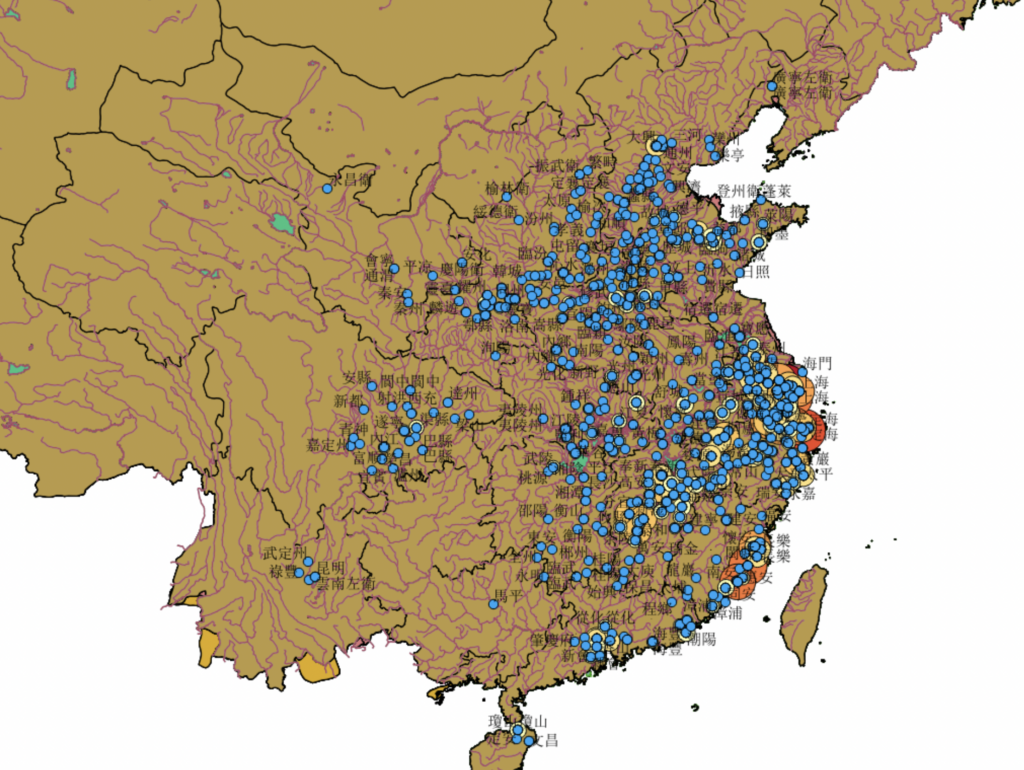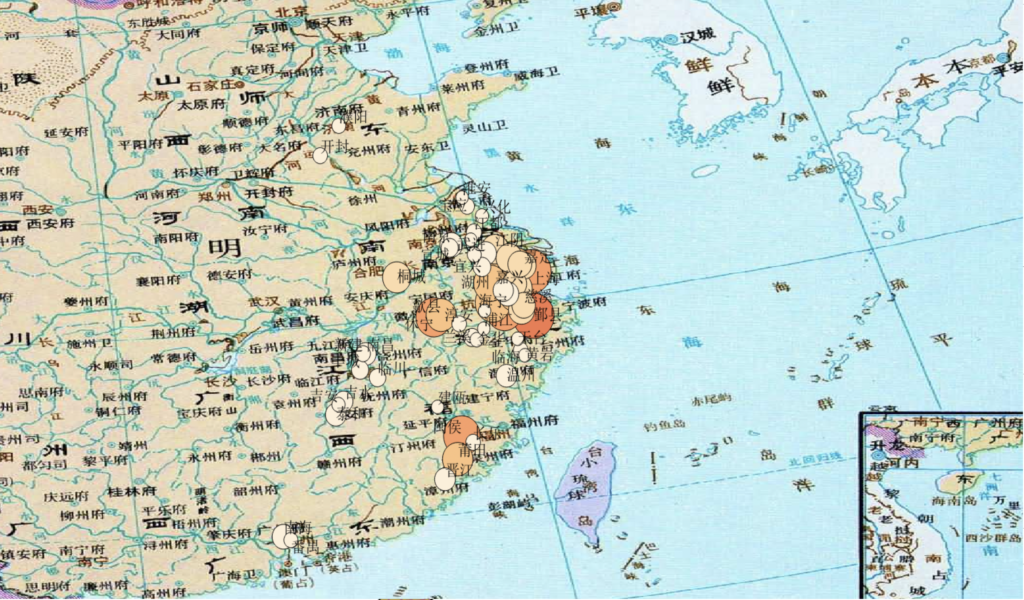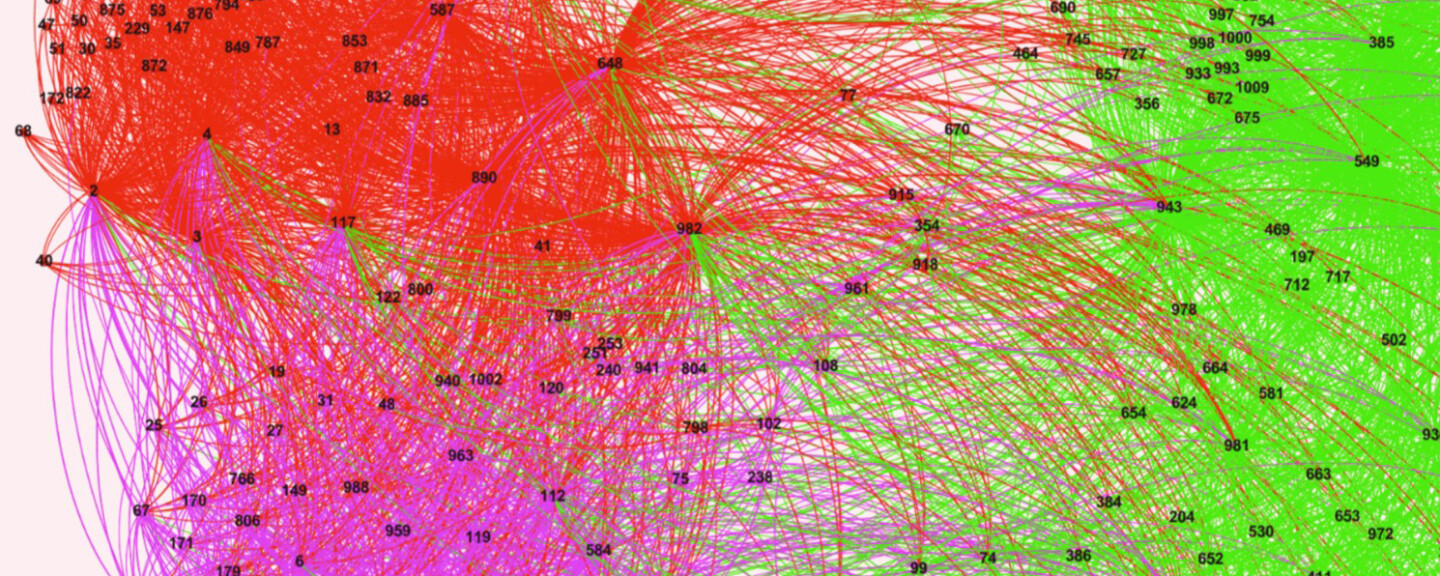Digital tools provide new techniques for answering key questions in the humanities and social sciences. The Fairbank Center’s ongoing support for digital projects – including creating and housing databases, funding digital scholarship, and providing training – is helping to push the boundaries of our disciplines.
In a tiny office tucked into the basement of the Center for Government and International Studies Knafel, a quiet revolution is underway. Qian Lixiang 錢禮翔 is hunched over monitors and keyboards, squinting into a maze of maps, lines, and figures on a screen.
Qian describes himself as a scholar of Ming Dynasty literature, but he’s not working with dog-eared manuscripts. His screen shows a cutting-edge analytical network supported by the China Biographical Database Project (CBDB). Qian is visualizing the entire Ming Dynasty publishing industry: the bestsellers, the small-time authors, and everyone in between.

The data tells a remarkable story. Turns out, Ming publishers used an ingenious sales tactic that Amazon, Apple, and dozens of other corporate giants use today: the long tail.
___
Coined by Chris Anderson in The Long Tail: Why the Future of Business is Selling Less of More, the strategy involves a counterintuitive business tactic: Sell small amounts of a vast array of products, in addition to a few blockbusters, to produce higher sales overall.
Qian began thinking about the long tail after beginning his doctoral studies at Zhejiang University, where he researched “the family and friends network” of Ming literary titan Wang Shizhen 王世貞(1526-1590). Qian had been focusing on the big-name literati. But he started wondering, what if the smaller authors—those with modest sales and little-known aliases—were the secret to the Ming Dynasty’s burgeoning literary industry?

Qian’s search for an answer landed him at Harvard. Using CBDB’s field-defining network analysis tools to offer a window into the facts and figures of the Ming Dynasty’s literature scene, Qian has begun to confirm his suspicions: it is the thousands of writers with low book sales—what Qian calls “冷门作家 [neglected authors]”—who buoyed the Ming’s literary industry. The Ming publishing industry, like Amazon’s sales, featured a long tail.
___
Qian’s story is just one example of the ways CBDB is changing academics’ lives and democratizing cutting edge digital humanities research. “By introducing scholars to the methods of the digital humanities, we play an important role in introducing digital humanities to Chinese studies around the world,” says Peter Bol, Charles H. Carswell Professor of East Asian Languages and Civilizations and CBDB Director, who has been leading the Fairbank Center’s drive to develop digital China research and activities.
“China’s current level of digital humanities research still needs to be improved and needs to learn from databases such as CBDB,” Qian says. “The CBDB provides methodological guidance for digital humanities researchers worldwide.”
Through the CBDB, Qian is changing the field of digital humanities research, one bestseller and overlooked story at a time.


